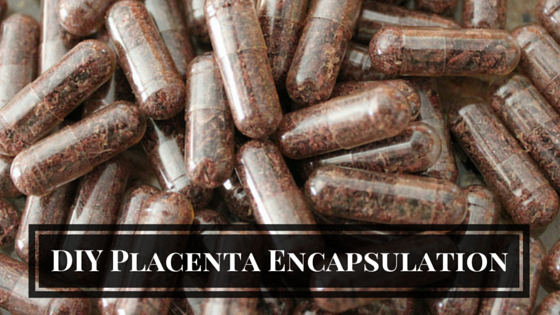Skip to content

Placenta Encapsulation is becoming increasingly popular. What once was viewed as something for only crunchy/hippy mamas has now become popular with women from all walks of life.
So how exactly does the encapsulation process work? How do you get little capsules from a raw organ? Can I encapsulate my own placenta, myself? I get these types questions all the time. So let’s talk about it.
The gist of it is the placenta is dehydrated and ground into powder that is placed into capsules that can be taken just like a vitamin or supplement.
As for doing it yourself… It is possible, but not something I would recommend. Here’s why:
Before making this post, I spent some time checking out the information online for DIY placenta encapsulation. I skimmed how-to blog posts and watched a couple YouTube placenta encapsulation tutorial videos. The information I found was rather terrifying.
There is so much misinformation out there!!!
If someone is following these online tutorials, it is likely one could become extremely sick due to these unsafe recommended methods. There are some great online tutorials for all kinds of things available, but I have NEVER seen a great one for encapsulating your own placenta safely. I’m not one to gamble with my health and safety.
Think about it this way: I could watch a video about how to cut my own hair but more than likely I will never do it as well as my hair stylist. Why? Because she was specifically trained and holds a certification. She has experience and I trust her to provide the highest quality of service.
Lets not forget, to purchase all of the equipment necessary to safely encapsulate your placenta, is on average, about what it would cost to hire a professional to do it for you.
Speaking of safety, it is a really good idea to find a qualified placenta encapsulation specialist who has received in person (handling an actual placenta) training from a reputable training organization. Anyone can wake up and call themselves a Placenta Encapsulator. There is no regulation!
I am currently Nebraska’s ONLY trained Postpartum Placenta Specialist. ProDoula’s placenta training and certification process is rigorous in order to ensure all placentas are handled safely and clients are receiving the highest quality of support throughout the process.
In order to offer complete transparency in my methods, I encapsulate specifically in my clients’ homes. To comply with The World Health Organization’s regulations for organ transport, the owner of the placenta transports her own placenta from her birthing facility to her home in a kit I provide, along with instructions for safe storage and transport. This process also prevents exposure to additional unfamiliar bacteria as well as eliminates the risk of her placenta being mixed up with anyone else’s.
I bring my own high-quality equipment and ensure it is working properly before arriving at my client’s home. Once I have used my supplies, I safely discard disposable items and sanitize my equipment with a bleach-water solution, as outlined in the Bloodborne Pathogens course for Placenta Encapsulators that I completed in addition to my placenta encapsulation training.
Many of my clients have been interested in seeing, touching, or taking photos of their placenta. If you are interested in participating in the process that is completely fine, but I will not simply give anyone instructions on how to do it themselves.
Another reason why I do not suggest people try to “DIY their placenta” is that once you come home from the hospital you will probably want to spend your time recovering and bonding with your new baby.
When I process a placenta it takes approximately two to two and half hours the first day getting everything prepared and the dehydration processes started. I then leave and return the next day to complete the process which also takes approximately two to two and half hours. It would be extremely difficult to complete this process as a new parent while also trying to meet the needs of a newborn.
An added benefit of utilizing Central Nebraska Doula’s Placenta Encapsulation service is that I am also a trained postpartum doula. While I am in your home I am an accessible resource. Questions about postpartum recovery or newborn care? You have a trained professional at your disposal.
Your placenta is not a pinterest project. You only get ONE chance to make sure it is done properly.
I often tell people I am offering more than just a jar of placenta pills. I am a trained professional offering a quality service. I will encapsulate your placenta using the safest methods while also meeting your postpartum needs. Now doesn’t that sound great!?
